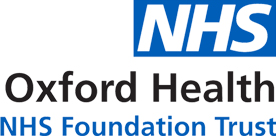Alternative and Augmentative Communication (AAC)
What is AAC?
Augmentative and Alternative Communication (AAC), refers to the use of objects, symbols, charts, photographs, signing and electronic aids to help a child communicate. These are used by children and young people when they have difficulties with producing or understanding spoken or written language. Different children can benefit from different levels of AAC and this may alter as they get older or their language changes.
Why use AAC?
AAC may be used for a variety of reasons:
- As a bridge or stopgap: to help the child communicate whilst their speech and language skills are developing.
- To help the child make sense of spoken language.
- To supplement their spoken skills: to be used alongside speech to help the child make themselves understood.
- As an alternative means of communication: because of the nature of their difficulties, some children are always likely to struggle with spoken communication. AAC can give them a voice and therefore some control over their environment.
- As a tool to develop language skills: to give the child the experience of building their language skills, e.g. forming sentences when they can only produce sounds or single words themselves.
Different types of AAC
Some examples of different communication systems include:
- Eye pointing frames: used with photographs, line drawings, symbols etc.
- Communication books or charts.
- Electronic communication aids: Go Talk, Bigmac, Messagemate, Tech speak, Dynavox, iPads set up with communication software.
- British Sign Language or signing systems such as Makaton.
- Switches.
- PODD books.
- Picture Exchange Communication Systems (PECS).
How can it benefit children?
Children with a range of difficulties can benefit from different types of AAC. Not all children will require electronic devices, but many will benefit from signing, symbols and communication books. Children able to benefit from more sophisticated technology can have integrated systems that enable the child to use personal computers.
Non-urgent advice: SENSS SEN-ICT-AAC
In Oxfordshire the Speech and Language Therapy Service works in conjunction with the SENSS SEN-ICT-AAC team, who aim to identify ways in which technology can support access to the curriculum and/or aid communication for children and young people. If it is felt that further support from the SENSS service would be beneficial, a child’s SLT will work with parents and school/setting staff to make a referral to their team.
Further information
For more information, please visit:
Page last reviewed: 12 August, 2021

